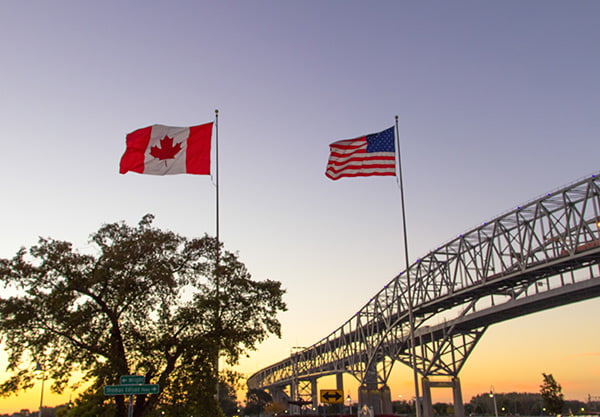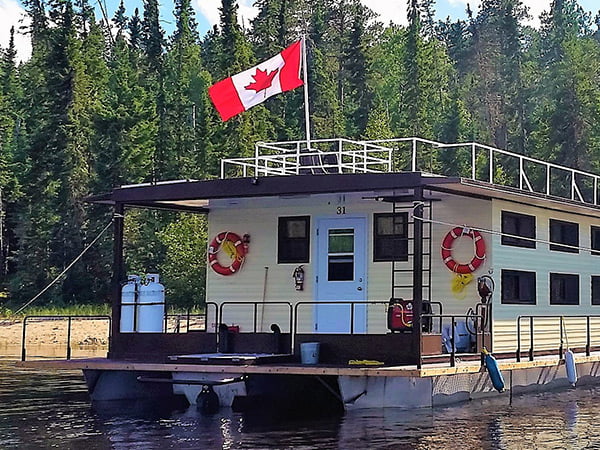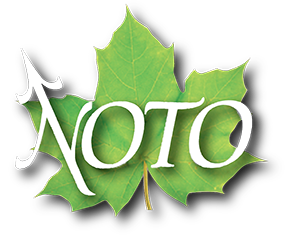Crossing the Border
 Tips for Crossing the Canada/US Border
Tips for Crossing the Canada/US Border
Although it is the longest undefended border in the world, it is still a border between two different countries. Customs officers at the border ensure that people entering Canada respect Canadian Laws. They are authorized to interview persons seeking entry to Canada to determine admissibility. Below are some of the requirements and the information you will need to enter Canada.
Identification
When you enter Canada, a customs officer may ask to see your passport and a valid visa if one is necessary. A passport or NEXUS card is required if you are traveling by air. (the NEXUS card can be used in airports with a NEXUS kiosk.)
U.S. citizens returning home from Canada, Mexico, the Caribbean or Bermuda, by land or sea, are required to present one of the following travel documents.
Canadians traveling to the USA: Approved Travel Documents
NOTE: All U.S. citizens including children must present a passport or other approved travel document when entering the United States.
A passport is the preferred document to cross the Canada/US border. Guests report that using a passport generally simplifies border crossing and results in fewer delays.
US citizens who are owners of a seasonal Tourism business in Canada are advised to have the following documents in their possession for ease of processing their entry into Canada
- Work permit compliance fee receipt with the payment reference number written on it
- Share certificate if applicable (A share certificate is a certificate issued by a company certifying that on the date the certificate is issued a certain person is the registered owner of shares in the company. The key information contained in the share certificate is: the name and address of the shareholder and the number of shares held)
- Certificate of Incorporation
- Deed for the property
- Signed Purchase agreement if you are a first time new owner & a business plan
- A financial statement from our accountant (showing balance sheet, retained earnings, statement of income, cash flows)
- T4’s from previous year employees
- All invoices showing purchases to Canadian vendors
- All tax bills
- MNRF land use permits
- Commercial Bait license (if applicable)
- Tax Return
- NOTO letter or other support letters (optional but very helpful)
It is recommended that these documents be placed in a binder with dividers for ease of examination and reading.
What Can I Bring Into Canada?
NOTES ON TARRIFS:
Updated March 31st, 2025
NOTO has received confirmation from the Director General of CBSA through TIAC and a CBSA Superintendent at the Fort Frances border that tariffs will NOT be applied to personal items including consumable items brought into Canada by non-resident visitors. These grocery items will need to be in an amount that is “appropriate for their needs and consistent with the purpose, nature and duration of their intended stay in Canada.”
See Temporary Importation of Baggage and Conveyances by Non-residents Memorandum D2-1-1 for specific details.
Food limits will continue to apply as always for dairy and meat products as set out by the Canadian Food Inspection Agency (CFIA). Limits can be found here: https://inspection.
Personal limits for the following items still apply:
- (a) 1.5 L of wine, or 1.14 L of spirits, or 1.14 L of wine and spirits, or 8.5 L of beer or ale;
- (b) 200 cigarettes, 50 cigars, 200 g of manufactured tobacco and 200 tobacco sticks; or
- (c) 200 rounds of ammunition or, if they are for the use of that person at a meet held under the auspices of a recognized shooting or rifle association of Canada, 1,500 rounds of ammunition.
If guests are bringing in items that will remain in Canada (items for camp operators), those items will be subject to tariffs based on where they are manufactured.
We will continue to check in with border officials and senior levels of the Federal Government while this trade war continues. For more information, visit the CBSA website.
Personal Baggage
As a visitor, you can bring certain goods into Canada for your own use as “personal baggage.” Including:
- Clothing
- Camping and sports equipment
- Cameras, tape recorders and personal computers
- Vehicles, private boats and aircraft.
More information on personal baggage is also available at the CBSA website. If importing a boat, please ensure you meet the conditions listed on this page.
Firearms and Weapons
Before you attempt to import a firearm or weapon, you should contact the Canada Firearms Centre for information at 1-800-731-4000 or www.cfc-cafc.gc.ca
The following requirements apply to the importation of firearms and weapons:
- You must be at least 18 years of age;
- You can import non-restricted and restricted firearms, provided you meet all requirements; and
- You cannot import prohibited firearms, weapons or devices, including silencers, replica firearms, switchblades and other weapons.
The process for bringing ordinary hunting rifles and shotguns into Canada is relatively simple and usually involves filing a form in advance and making a declaration at the border.
Other important import information:
Bait: CBSA plays an important role in Protecting Canada from invasive species (cbsa-asfc.gc.ca) Accordingly, personal importations of bait are NOT permitted and will be refused entry. This includes both fishing and bear bait.
Importing Boats: Travellers towing or transporting boats at all border crossings in Canada must ensure that boats, trailers, vehicles and water-related equipment are free of Zebra and Quagga mussels before entering Canada. All boats and equipment must be cleared of aquatic plants, animals, mud, debris, and be drained of water and dry. When boats, trailers, vehicles, and conveyances arriving at the border are suspected to be contaminated, enforcement authorities will be notified to inspect and/or decontaminate the equipment. If decontamination is not feasible at time of importation, travellers’ equipment may be held and turned over to provincial authorities for a quarantine period, or refused entry by enforcement authorities and directed to a decontamination station in the U.S. before returning to Canada. Please view paragraphs 23-27 for more information.
Cannabis: Don’t bring it in, Don’t take it out. Click HERE for more information.
Poultry Products: When there are outbreaks of highly pathogenic avian influenza (HPAI) in the United States, the CFIA will restrict the import of some poultry products or by-products from the United States, including eggs and raw pet foods, sourced, processed, or packaged from the restricted zones. Click here for a list of restricted zones.
Travelling with Dogs – New Requirements from the USA
Changes come into effect August 1st, 2024
Dogs entering or returning to the United States that have been only in dog rabies-free or low-risk countries in the past 6 months must meet the following requirements:
- completed CDC Dog Import Form
- must appear healthy upon arrival
- must be at least six months old at time of entry or return to the U.S.
- must have a microchip that can be detected with a universal scanner to identify them
Canada is classified as a rabies-free country. To learn more, please visit the CDC website: https://www.cdc.gov/importation/dogs/rabies-free-low-risk-countries.html
Guests with Criminal Records
Visitors to Canada who have any kind of criminal record may be denied entry. Even if you have entered Canada before, new screening procedures may lead to you being turned back.
Many jurisdictions distinguish between more and less serious offences. The US, for example, classifies crimes as either felonies or misdemeanors. Canada makes a similar distinction with indictable and summary offences, with indictable offences being the more serious.
However, many offences can be treated as either indictable or summary in Canada, depending on the specific circumstances. This is important to know, since determination of admissibility is based on how the offence would be treated in Canada, not its status in the visitor’s home state.
To help get you started, we recommend that you use our self-assessment chart: Entering Canada With a Criminal Record Self-Assessment
There are three basic procedures available that can allow you to legally enter Canada if you have a criminal record:
Granted Rehabilitation
You can apply through a Canadian Consulate or certain border crossings to have your record examined by immigration officials. There is a non-refundable administration fee. If the application is successful, you will receive a letter stating that you have been Granted Rehabilitation, and you will now be allowed to enter Canada freely any time. The application can be found here.
You will need to apply for Granted Rehabilitation if:
-
- you have committed more than one indictable offences and at least 5 years has passed since your last sentence was completed, or
- you have committed one indictable offence after December 18, 2018 and at least 5 years has passed since your sentence (or probation) was completed
It is important that you give yourself an appropriate amount of time to get your application processed. It can now take up to 2 years to file your application and it can be very costly.
Deemed Rehabilitation
Under some circumstances, you can be Deemed Rehabilitated without having to apply for Granted Rehabilitation. This procedure applies if:
-
- You committed a single indictable offence that would be punished by a term of imprisonment of less than ten years (based on how the offence would be classified in Canada) and have not committed any offences since. Ten years must have passed since the completion of the sentence, including any probation.
- Or if you have committed two or more summary offences and five years have passed since the sentences were served and no subsequent offences have been committed.
If you have committed an indictable offence after December 18th, 2019, you will no longer be eligible to meet “Deemed Rehabilitation” status. You will need to successfully apply for Granted Rehabilitation in order to enter Canada.
Deemed Rehabilitation is generally determined by an immigration officer at the border, although it is possible to have a determination made in advance. This application is available at this link.
Temporary Resident Permit
At their discretion, immigration officials may admit someone who does not qualify for Deemed Rehabilitation through a Temporary Resident Permit (TRP). It is normally issued for a single visit in extreme cases. More information on the requirements and uses can be found here.
 Welcome to Canada
Welcome to Canada
These procedures make it possible to enter Canada, even if you have a criminal record. In most cases, it is better to apply in advance to determine your admissibility, and which procedure is best for you to follow. You should also be prepared with additional information on the offence to help the officer determine your eligibility. Remember, the determination will be based on the information in the database. If there are any errors, like a charge that was dropped, you need to get those corrected in your home jurisdiction beforehand.
Despite the troubled times we live in, Canada is still the same friendly place to visit it has always been. The vast majority of guests still enter Canada with absolutely no problem. For those whose backgrounds may pose some difficulty, these procedures may allow them to come and enjoy all that Canada has to offer.




